At the start of this year, the celebrated Danish chef Frederik Bille Brahe, 40, closed down Apollo Bar & Kantine, his beloved art-world hangout in the courtyard of Copenhagen’s Kunsthal Charlottenborg, in order to reinvent the space and its menus. He and his executive chef, Yuta Kurahashi, 36, shifted their focus to dinner and now serve an evening meal of pared-back dishes that riff on seasonal ingredients. But if Bille Brahe likes to keep things simple, he also enjoys surprising his guests. The dish he calls Salada Rosso presents as an untouched head of radicchio but it is, in fact, a clever piece of trompe l’oeil: the chicory has been deconstructed, its bitter leaves coated with a rich, earthy black garlic and almond cream and a sweet citrus vinaigrette, then reassembled with chunks of tart blood orange tucked between them. Radicchio, Bille Brahe says, is a vegetable “most people think they don’t like — but then you make something with it that changes their minds.” Below, he shares the recipe.
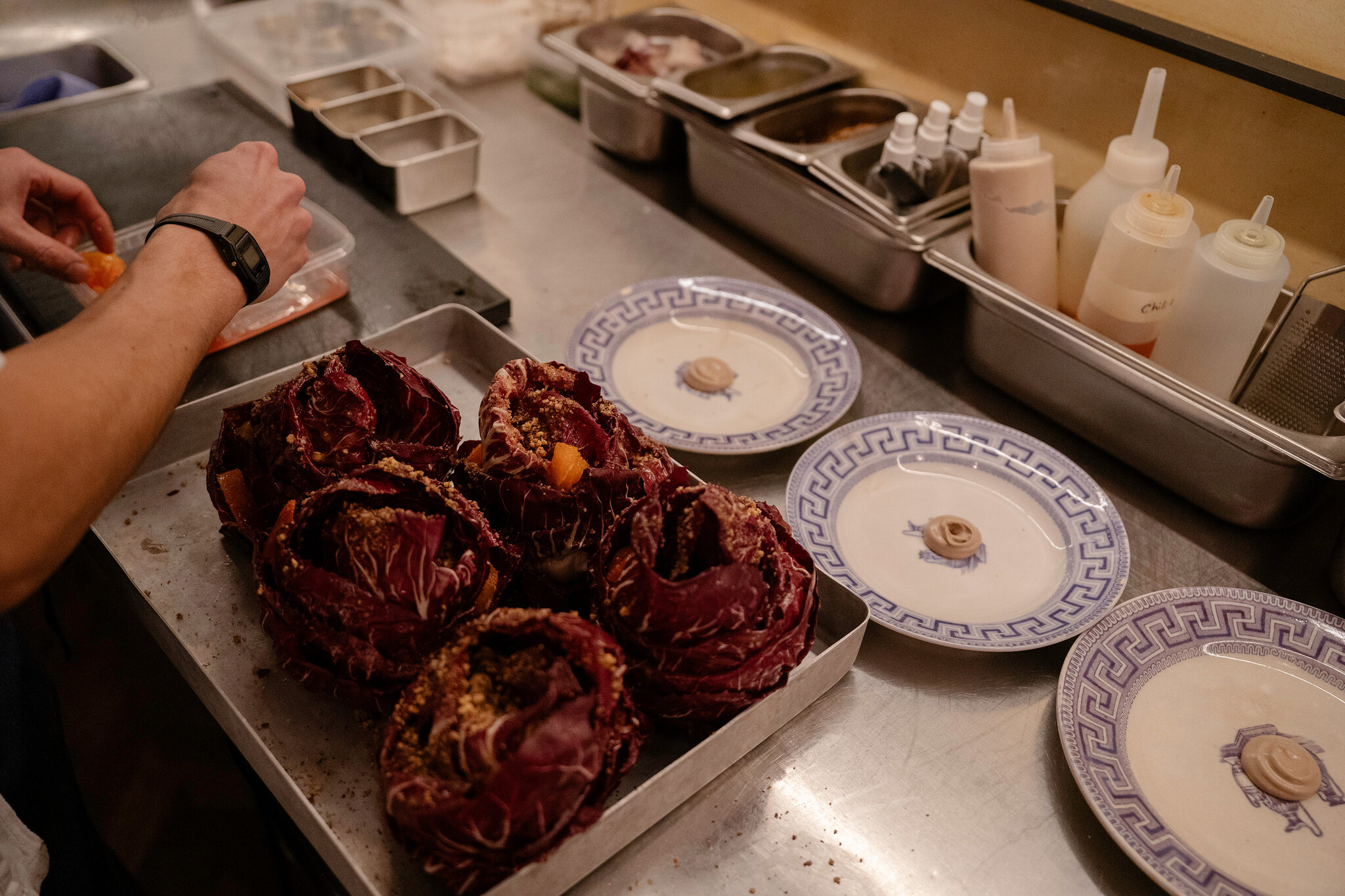
Frederik Bille Brahe’s Salada Rosso
Ingredients
2 heads of radicchio
2 blood oranges and 1 more for zest
For the crumble
1⅘ ounces dry (ideally day-old) bread
Olive oil
About 15 walnuts
3½ ounces almonds, with the skin removed
¾ cup, plus a tablespoon of water
3 cloves of black garlic
Salt
For the dressing
½ cup rose petal vinegar or red wine vinegar
2 teaspoons brine from preserved lemons
1 teaspoon balsamic vinegar
½ teaspoon mirin
½ teaspoon liquid shio koji
½ cup rapeseed or sunflower oil
1½ tablespoons honey
Special equipment
Kitchen thermometer
High-speed blender
Method
1. Clean the radicchio by cutting off the bottom and separating the leaves into a container partly filled with ice-cold water. Try not to break the leaves when separating and washing. Dry the leaves in a salad spinner and store them on a tea towel until later.
2. To prepare the orange segments, first cut off the top and bottom of the fruits and remove the peel. Then, slice off the white pith from the exterior, leaving just the flesh of the oranges. Cut each orange into 3 pieces by slicing from the sides toward the core and remove the pith at the centre. Cut each slice into 10-12 smaller pieces and set aside.
3. Make the crumble: Cut the bread into roughly inch-square cubes, toss them with a little olive oil and spread them on a sheet tray. Bake at 375 degrees for roughly 10 minutes. Toast the walnuts in the oven, for 6-8 minutes. The bread and nuts should be golden brown and crispy. Once cool, mix them together in a blender until you have a medium-coarse crumble. Set aside.
4. Make the almond cream: In a high-speed blender, blend the almonds and water for a few minutes. Pass the liquid through a muslin cloth into a pot. Heat the liquid to 195 degrees, around boiling point, and let it sit on the heat until it thickens. Set it aside and let it cool in the pot for about 15 minutes. Put half of the purée back into the blender with the black garlic cloves and blend until the texture is consistent, then fold it into the unblended half of the purée. Leave in the fridge until serving.
5. Make the dressing by combining all the ingredients in a bowl with a whisk or a hand blender. Set aside.
6. Assemble the salad (you can make one big dish or two smaller ones): Start by laying out the leaves, curved side down, on a cutting board. It’s helpful to group larger leaves together and smaller leaves together. Add a generous spoonful of the almond cream into the core of every third leaf. Then dress all the leaves generously with the dressing, trying to cover each one. Next, add small chunks of orange to some of the leaves. Add a sprinkle of the crumble, flaky salt, black pepper and orange zest to all of the leaves. Now, add a dollop of the almond cream to a plate and lay the largest leaves, or two together, on top of the dollop, creating a bowl. Add leaves on top, starting with the largest and finishing with the smallest, until you’ve made a mountain. Finally, add a sprinkle of crumble and a little orange zest on top to finish.




 Frederik Bille Brahe’s Salada Rosso. Photograph by Charlotte de la Fuente.
Frederik Bille Brahe’s Salada Rosso. Photograph by Charlotte de la Fuente.  Alex Wong's ricotta gnudi, pine mushroom and shiitake from Lana restaurant. Photography by Leigh Griffiths.
Alex Wong's ricotta gnudi, pine mushroom and shiitake from Lana restaurant. Photography by Leigh Griffiths. 

 Chai glazed hot cross buns from Sydney's Fabbrica Bread Shop. Image Courtesy of Fabbrica Bread Shop.
Chai glazed hot cross buns from Sydney's Fabbrica Bread Shop. Image Courtesy of Fabbrica Bread Shop. 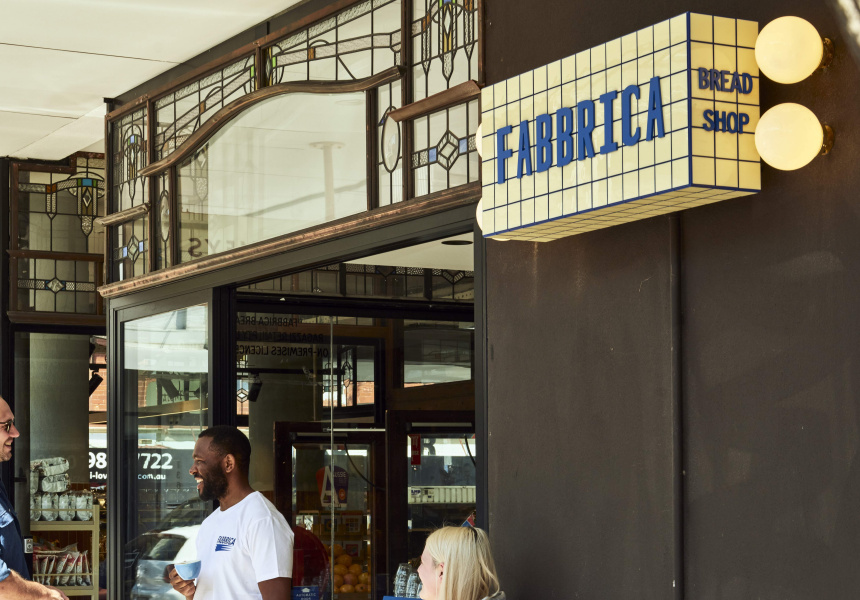
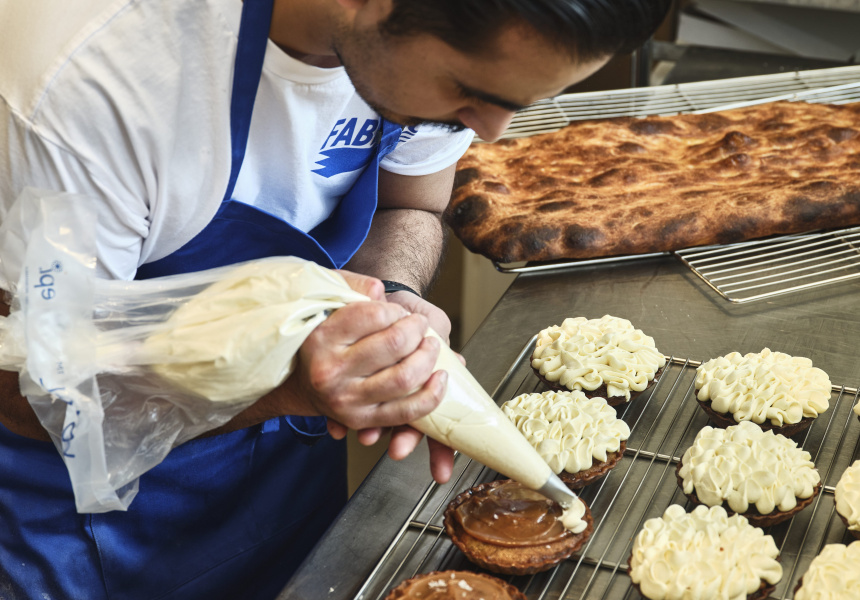
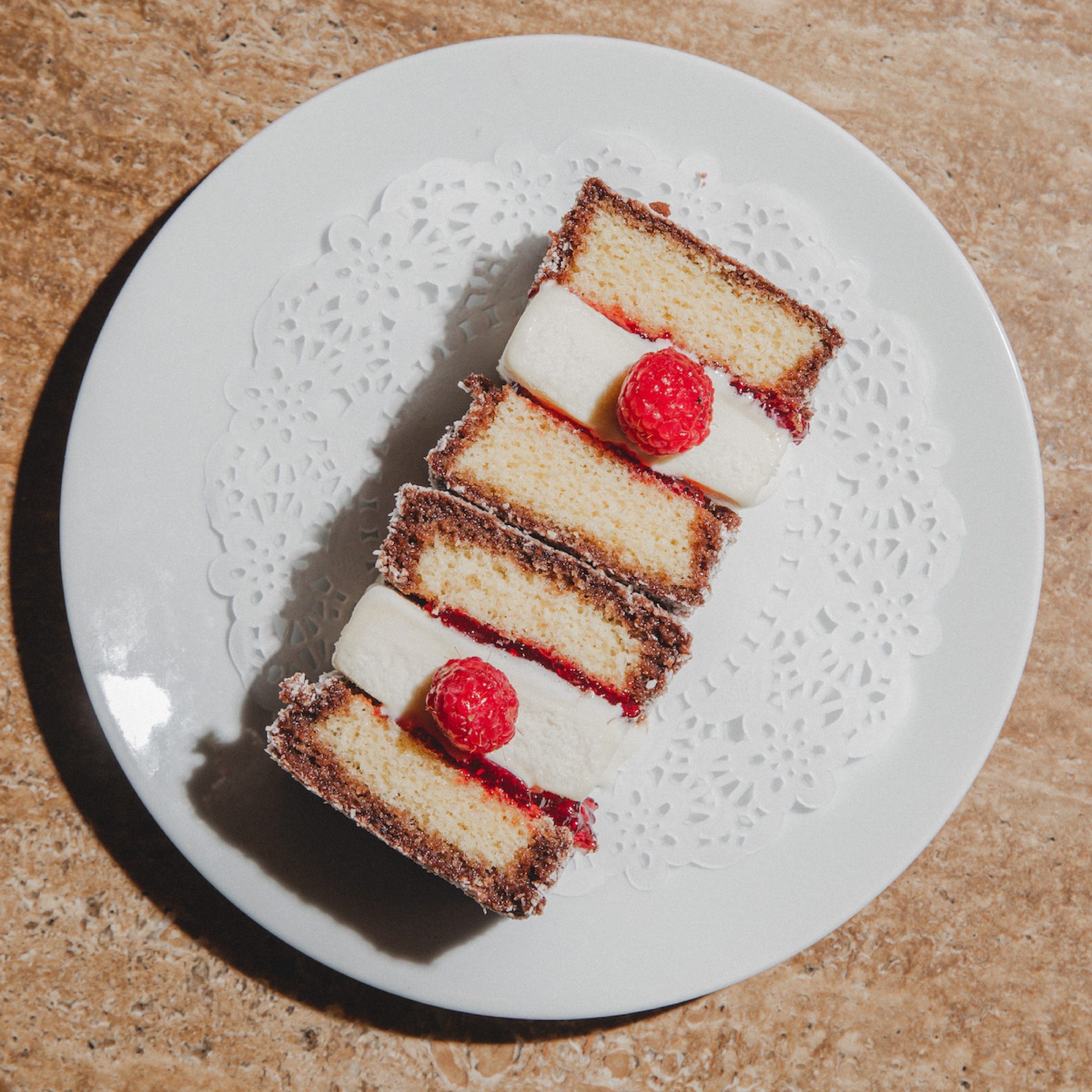 Lucky Prawn Love Lamington. Photograph courtesy of The Lucky Prawn Chinese Bistro / Hawke's Beer and Leisure Centre.
Lucky Prawn Love Lamington. Photograph courtesy of The Lucky Prawn Chinese Bistro / Hawke's Beer and Leisure Centre. 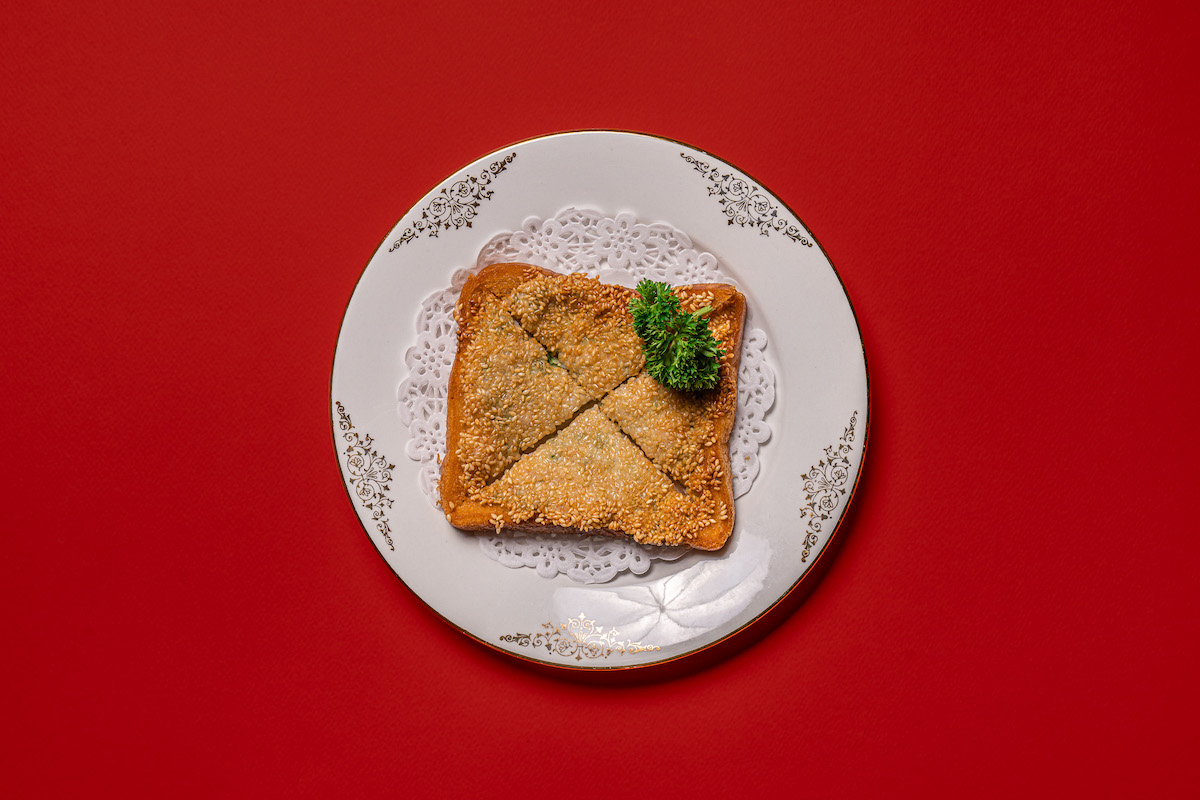 Lucky Prawn Toast. Photograph courtesy of The Lucky Prawn Chinese Bistro / Hawke's Beer and Leisure Centre.
Lucky Prawn Toast. Photograph courtesy of The Lucky Prawn Chinese Bistro / Hawke's Beer and Leisure Centre. 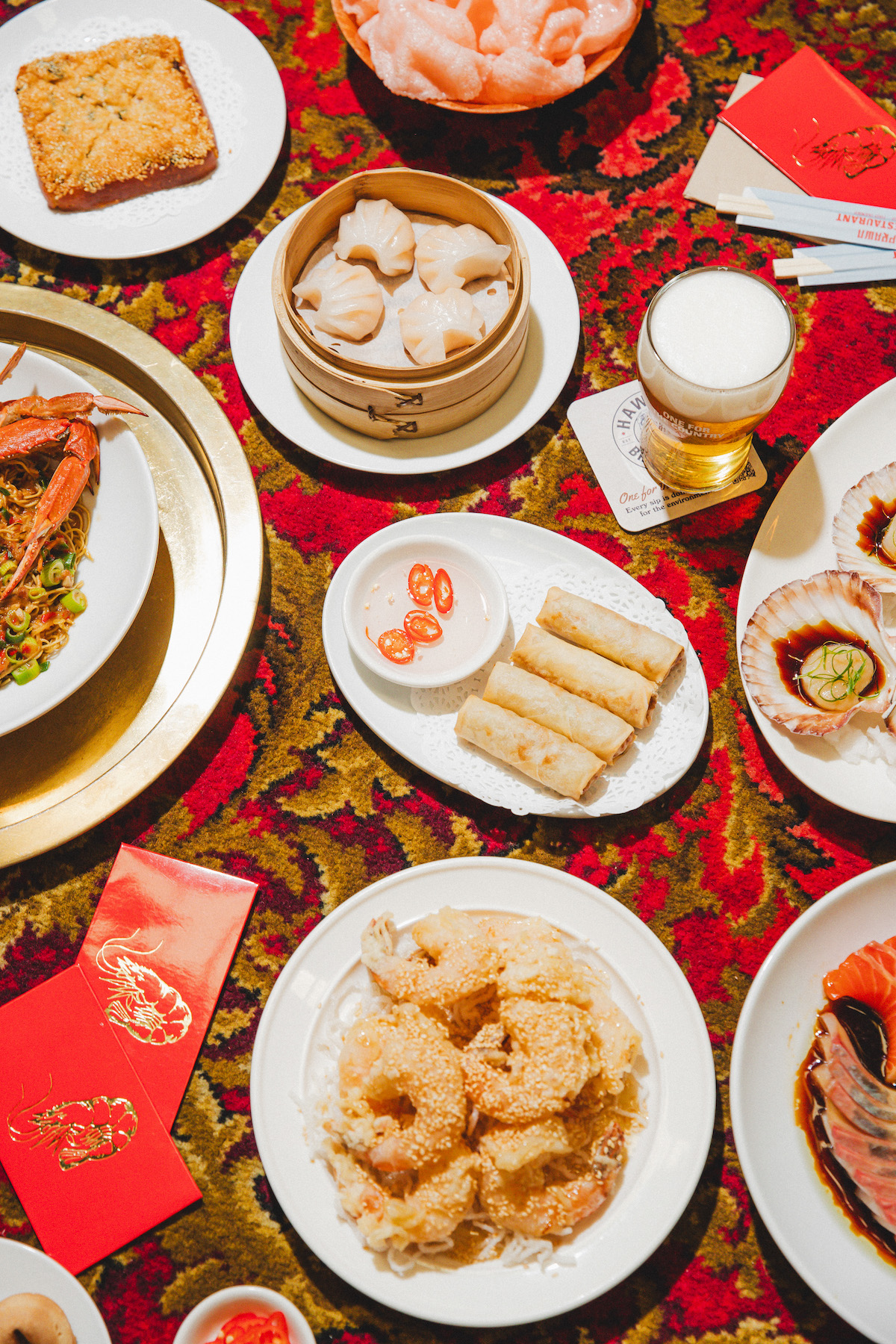
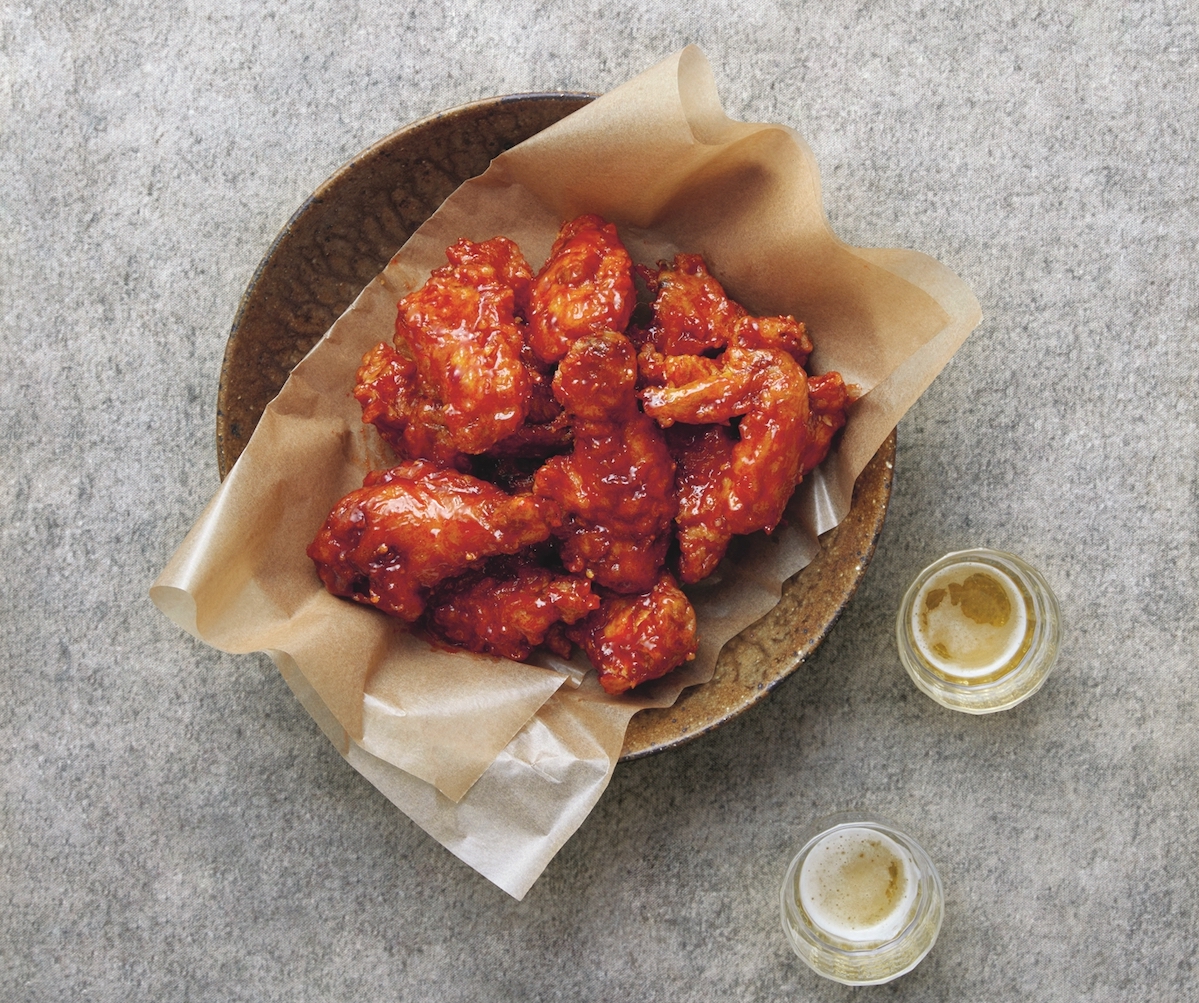 Sweet and Spicy Korean Fried Chicken, published in "The Korean Cookbook"
by Junghyun Park and Jungyoon Choi. Image courtesy of Phaidon.
Sweet and Spicy Korean Fried Chicken, published in "The Korean Cookbook"
by Junghyun Park and Jungyoon Choi. Image courtesy of Phaidon.